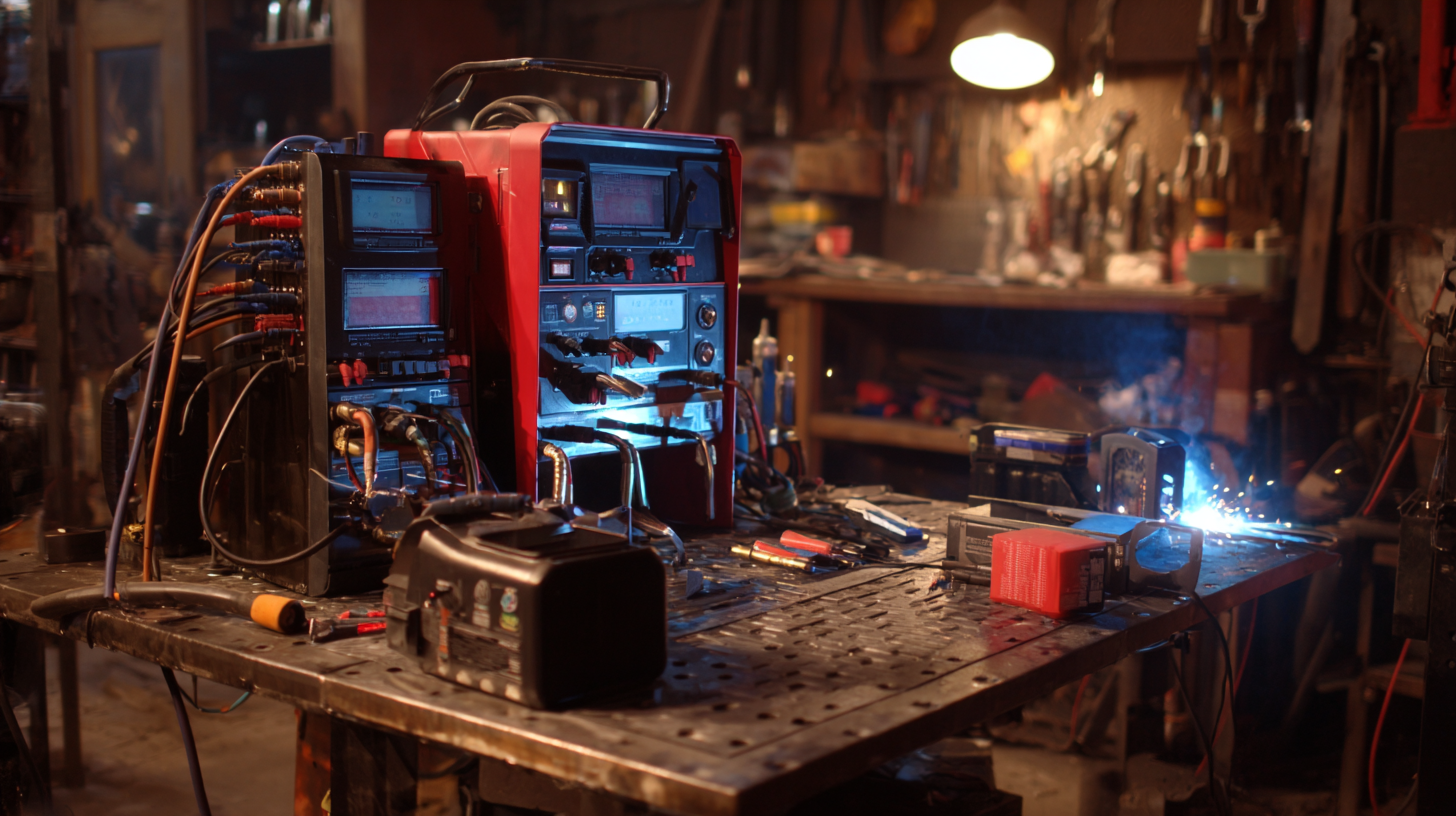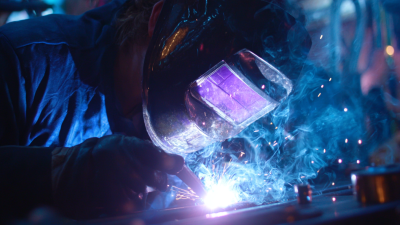Understanding the Essential Components of MIG Welding Equipment for Beginners
 MIG welding, or Metal Inert Gas welding, has gained immense popularity in various industries due to its efficiency and ease of use, particularly for beginners. Understanding the essential components of MIG welding equipment is crucial for those looking to start in this field. According to the American Welding Society, approximately 50% of the welding performed in the United States is done using MIG welding techniques, underscoring its significance in modern welding applications.
MIG welding, or Metal Inert Gas welding, has gained immense popularity in various industries due to its efficiency and ease of use, particularly for beginners. Understanding the essential components of MIG welding equipment is crucial for those looking to start in this field. According to the American Welding Society, approximately 50% of the welding performed in the United States is done using MIG welding techniques, underscoring its significance in modern welding applications.
The right MIG welding equipment can enhance productivity and improve the quality of welds, making it vital for novices to familiarize themselves with items such as the welding machine, gun, wire feed, and shielding gas. This knowledge not only ensures safety but also lays a solid foundation for mastering welding skills, ultimately contributing to successful project outcomes in both professional and DIY environments.
Key Components of MIG Welding Equipment: A Comprehensive Overview
MIG welding, or Metal Inert Gas welding, is increasingly popular among beginners due to its simplicity and efficiency. The essential components of MIG welding equipment include the welding machine, welding gun, shielding gas, and the filler material or welding wire. A 2021 industry report highlighted that 63% of novice welders prioritize understanding machine specifications and accessories to enhance their skills and safety.
The welding machine serves as the powerhouse, converting electrical energy to heat required for melting the metal. Coupled with the welding gun, which controls the welding wire feed and gas flow, it provides the user with a seamless welding experience. A consistent gas flow, typically from a mixture of argon and carbon dioxide, is crucial for shielding the weld pool from atmospheric contaminants, thus ensuring quality welds.
**Tip:** Always check the flow rate of the shielding gas; it should be between 20 to 25 cubic feet per hour for optimal performance. Additionally, using the right diameter of welding wire can significantly impact the ease of use. For beginners, a 0.030-inch wire is recommended for versatility across various materials. Understanding these components and their functions can set you on the path to becoming a proficient MIG welder.
Understanding Wire Feeders: Types and Their Impact on Welding Performance
When delving into MIG welding, understanding the types of wire feeders is crucial for enhancing welding performance. Wire feeders are the heart of the MIG welding process, responsible for delivering a consistent supply of welding wire to the arc. There are two primary types of wire feeders: the voltage-sensing feeder and the constant-speed feeder. Voltage-sensing feeders adjust the speed of the wire based on the arc voltage, making them ideal for applications requiring flexibility and adaptability. On the other hand, constant-speed feeders maintain a constant wire feed speed, promoting stability in welding operations and producing high-quality welds in less variable conditions.
The impact of the chosen wire feeder on welding performance cannot be overstated. A suitable wire feeder can improve arc stability and reduce defects in the weld bead, ensuring a cleaner and stronger weld. For beginners, selecting the right type of wire feeder based on their specific application and skill level is essential. Understanding the differences between these feeders allows novice welders to make informed decisions that can significantly influence their results and overall welding experience.

Selecting the Right Shielding Gas: Essential Tips for Beginners
Choosing the right shielding gas is a significant aspect of MIG welding that beginners should carefully consider. Shielding gases protect the weld pool from atmospheric contamination, helping to produce clean and strong welds. According to a report by the American Welding Society, the most commonly used shielding gas for MIG welding is a combination of argon and carbon dioxide, which offers an excellent balance of stability and penetration. A mixture of 75% argon and 25% carbon dioxide is particularly recommended for a variety of metals, including mild steel and stainless steel.

Beginners should also be aware that the choice of shielding gas can impact not only the weld quality but also the overall ease of use. Pure carbon dioxide, while less expensive, may produce more spatter and require more skill to achieve clean results. Conversely, using 100% argon can lead to a smoother weld, but it is more suitable for applications like aluminum welding. Understanding these options allows newcomers to make informed decisions on shielding gases, ultimately enhancing their welding capabilities and confidence in executing different projects.
The Role of Power Sources in MIG Welding: Features to Look For
When embarking on a MIG welding journey, understanding the role of power sources is crucial for beginners. The power source provides the necessary voltage and current required for the welding process, significantly impacting the quality of the weld. Key features to consider include the type of power supply, whether it's a constant voltage or constant current system. For MIG welding, a constant voltage power supply is often preferred, as it maintains a steady arc regardless of the distance between the electrode and the workpiece.
Another important aspect to evaluate is the power range. Beginners should look for power sources that offer a wide range of amperage settings, allowing for versatility across different materials and thicknesses. Additionally, features such as built-in wire feeders and voltage adjustments can enhance usability and help in achieving a consistent weld. Budding welders should also assess connectivity options for shielding gases, as this affects the overall welding environment and results. A reliable power source tailored to these specifications sets the foundation for successful MIG welding projects.
Understanding the Essential Components of MIG Welding Equipment for Beginners
Essential Safety Gear for MIG Welding: Protecting Yourself on the Job
MIG welding is a skilled trade that demands not only expertise but also proper safety gear to protect welders on the job. Essential safety equipment includes high-quality welding helmets that shield the eyes and face from sparks and intense light. The latest models provide enhanced visibility and comfortable fit, ensuring welders can work safely for extended periods. Along with helmets, wearing appropriate welding gloves is crucial. The best gloves should resist heat and provide a good grip, minimizing the risk of burns and improving overall handling of tools.
In addition to helmets and gloves, safety glasses are vital, particularly since they can offer an extra layer of protection from debris and UV rays. Whether you’re tackling MIG, TIG, or Stick welding, having the right safety glasses tailored to the welding process enhances job site safety. The right gear not only prevents injuries but also boosts confidence, allowing welders to focus on their work without distraction. As MIG welding continues to be a predominant technique in various industries, investing in reliable safety gear becomes no less than a necessity for anyone looking to excel in this demanding field.

Contact us
Please fill out the enquiry form, and our dedicated team will promptly attend to your request

